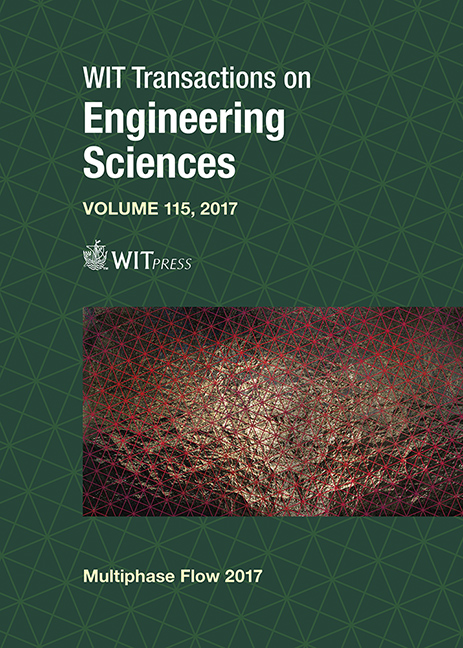NUMERICAL INVESTIGATION OF THE DYNAMIC RESPONSES OF COMPOSITE MATERIAL SUBJECTED TO BUBBLE COLLAPSE
Price
Free (open access)
Transaction
Volume
115
Pages
10
Page Range
43 - 52
Published
2017
Size
427 kb
Paper DOI
10.2495/MPF170061
Copyright
WIT Press
Author(s)
XIAOJIAN MA, BIAO HUANG, GUOYU WANG
Abstract
The presence of composite materials is an alternative solution to effectively overcome the troubles caused by the occurrence of bubble collapse in the marine propulsion systems, such as noise, vibration, pressure pulsations, and heavy erosion. The objective of this paper is to apply computational method to investigate the deformation of composite material with clamped ends subjected to the pressure loads caused by a 2D single bubble with a non-spherical collapse. The Euler-Lagrangian numerical method is supposed to simulate the bubble shape evolution, the transient pressure loads, and the dynamic response between fiber layers. With emphasis on numerical method, the CLSVOF method is used to track the air-liquid interface and the Ghost Fluid method is adopted to simulate the incompressible flow. The numerical results reveal that the substantial increase in pressure fluctuations on the composite material boundary are caused by the bubble evolution process near the wall, involving the motion of bubble rising to the boundary, the formation of the re-entrant jet, and the splitting of the daughter bubble. The impact pressure load significantly contributes to the deformation of the composite material. Furthermore, the effect of standoff distance between the bubble and wall on the dynamic responses among the fiber layers of composite material boundary is preliminarily discussed.
Keywords
bubble collapse, high speed jet, pressure loads, composite material, carbon fiber layer, CLSVOF





